#openshift docker
Explore tagged Tumblr posts
Text
Optimizing Performance on Enterprise Linux Systems: Tips and Tricks
Introduction: In the dynamic world of enterprise computing, the performance of Linux systems plays a crucial role in ensuring efficiency, scalability, and reliability. Whether you're managing a data center, cloud infrastructure, or edge computing environment, optimizing performance is a continuous pursuit. In this article, we'll delve into various tips and tricks to enhance the performance of enterprise Linux systems, covering everything from kernel tuning to application-level optimizations.
Kernel Tuning:
Adjusting kernel parameters: Fine-tuning parameters such as TCP/IP stack settings, file system parameters, and memory management can significantly impact performance. Tools like sysctl provide a convenient interface to modify these parameters.
Utilizing kernel patches: Keeping abreast of the latest kernel patches and updates can address performance bottlenecks and security vulnerabilities. Techniques like kernel live patching ensure minimal downtime during patch application.
File System Optimization:
Choosing the right file system: Depending on the workload characteristics, selecting an appropriate file system like ext4, XFS, or Btrfs can optimize I/O performance, scalability, and data integrity.
File system tuning: Tweaking parameters such as block size, journaling options, and inode settings can improve file system performance for specific use cases.
Disk and Storage Optimization:
Utilizing solid-state drives (SSDs): SSDs offer significantly faster read/write speeds compared to traditional HDDs, making them ideal for I/O-intensive workloads.
Implementing RAID configurations: RAID arrays improve data redundancy, fault tolerance, and disk I/O performance. Choosing the right RAID level based on performance and redundancy requirements is crucial.
Leveraging storage technologies: Technologies like LVM (Logical Volume Manager) and software-defined storage solutions provide flexibility and performance optimization capabilities.
Memory Management:
Optimizing memory allocation: Adjusting parameters related to memory allocation and usage, such as swappiness and transparent huge pages, can enhance system performance and resource utilization.
Monitoring memory usage: Utilizing tools like sar, vmstat, and top to monitor memory usage trends and identify memory-related bottlenecks.
CPU Optimization:
CPU affinity and scheduling: Assigning specific CPU cores to critical processes or applications can minimize contention and improve performance. Tools like taskset and numactl facilitate CPU affinity configuration.
Utilizing CPU governor profiles: Choosing the appropriate CPU governor profile based on workload characteristics can optimize CPU frequency scaling and power consumption.
Application-Level Optimization:
Performance profiling and benchmarking: Utilizing tools like perf, strace, and sysstat for performance profiling and benchmarking can identify performance bottlenecks and optimize application code.
Compiler optimizations: Leveraging compiler optimization flags and techniques to enhance code performance and efficiency.
Conclusion: Optimizing performance on enterprise Linux systems is a multifaceted endeavor that requires a combination of kernel tuning, file system optimization, storage configuration, memory management, CPU optimization, and application-level optimizations. By implementing the tips and tricks outlined in this article, organizations can maximize the performance, scalability, and reliability of their Linux infrastructure, ultimately delivering better user experiences and driving business success.
For further details click www.qcsdclabs.com
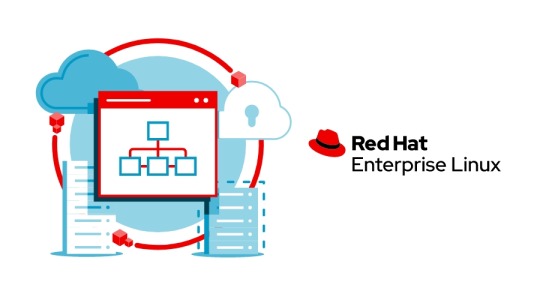
#redhatcourses#redhat#linux#redhatlinux#docker#dockerswarm#linuxsystem#information technology#enterpriselinx#automation#clustering#openshift#cloudcomputing#containerorchestration#microservices#aws
1 note
·
View note
Text
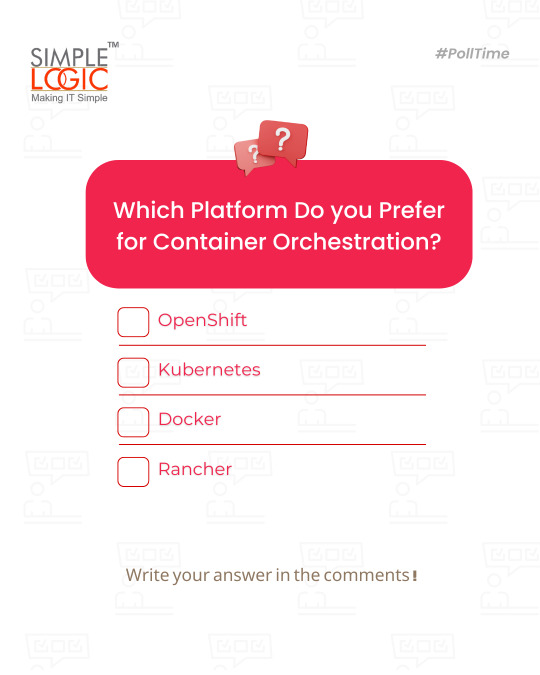
#PollTime Which platform do you prefer for container orchestration? A) OpenShift 🚢 B) Kubernetes ⚙️ C) Docker 🐳 D) Rancher 🐮 Comments your answer below👇 💻 Explore insights on the latest in #technology on our Blog Page 👉 https://simplelogic-it.com/blogs/ 🚀 Ready for your next career move? Check out our #careers page for exciting opportunities 👉 https://simplelogic-it.com/careers/
#dropcomment#manageditservices#itmanagedservices#poll#polls#container#orchestration#openshift#kubernetes#docker#rancher#itserviceprovider#managedservices#testyourknowledge#makeitsimple#simplelogicit#simplelogic#makingitsimple#itservices#itconsulting#itcompany
0 notes
Text
How much can energy harvesting cut maintenance costs for remote IoT sensors
Cloud Native Applications Market was valued at USD 6.49 billion in 2023 and is expected to reach USD 45.71 billion by 2032, growing at a CAGR of 24.29% from 2024-2032.
The Cloud Native Applications Market: Pioneering the Future of Digital Transformation is experiencing an unprecedented surge, driven by the imperative for businesses to achieve unparalleled agility, scalability, and resilience in a rapidly evolving digital economy. This architectural shift, emphasizing microservices, containers, and automated orchestration, is not merely a technological upgrade but a fundamental re-imagining of how software is conceived, developed, and deployed.
U.S. Businesses Lead Global Charge in Cloud-Native Adoption
The global Cloud Native Applications Market is a dynamic and rapidly expanding sector, foundational to modern enterprise IT strategies. It empowers organizations to build, deploy, and manage applications that fully leverage the inherent advantages of cloud computing. This approach is characterized by modularity, automation, and elasticity, enabling businesses to accelerate innovation, enhance operational efficiency, and significantly reduce time-to-market for new services. The market's robust growth is underpinned by the increasing adoption of cloud platforms across various industries, necessitating agile and scalable software solutions.
Get Sample Copy of This Report: https://www.snsinsider.com/sample-request/6545
Market Keyplayers:
Google LLC (Google Kubernetes Engine, Firebase)
International Business Machines Corporation (IBM Cloud, IBM Cloud Pak)
Infosys Technologies Private Limited (Infosys Cobalt, Cloud Ecosystem)
Larsen & Toubro Infotech (LTI Cloud, LTI Digital Transformation)
Microsoft Corporation (Azure Kubernetes Service, Azure Functions)
Oracle Corporation (Oracle Cloud Infrastructure, Oracle Autonomous Database)
Red Hat (OpenShift, Ansible Automation Platform)
SAP SE (SAP Business Technology Platform, SAP S/4HANA Cloud)
VMware, Inc. (VMware Tanzu, VMware Cloud on AWS)
Alibaba Cloud (Alibaba Cloud Container Service, Alibaba Cloud Elastic Compute Service)
Apexon (Cloud-Native Solutions, Cloud Application Modernization)
Bacancy Technology (Cloud Development, Cloud-Native Microservices)
Citrix Systems, Inc. (Citrix Workspace, Citrix Cloud)
Harness (Harness Continuous Delivery, Harness Feature Flags)
Cognizant Technology Solutions Corp (Cognizant Cloud, Cognizant Cloud-Native Solutions)
Ekco (Cloud Infrastructure Services, Cloud Application Development)
Huawei Technologies Co. Ltd. (Huawei Cloud, Huawei Cloud Container Engine)
R Systems (R Systems Cloud Platform, R Systems DevOps Solutions)
Scality (Scality RING, Scality Cloud Storage)
Sciencesoft (Cloud-Native Development, Cloud Integration Solutions)
Market Trends
Microservices Architecture Dominance: A widespread shift from monolithic applications to independent, smaller services, enhancing flexibility, fault tolerance, and rapid deployment cycles.
Containerization and Orchestration: Continued and expanding reliance on container technologies like Docker and orchestration platforms such as Kubernetes for efficient packaging, deployment, and management of applications across diverse cloud environments.
DevOps and CI/CD Integration: Deep integration of DevOps practices and Continuous Integration/Continuous Delivery (CI/CD) pipelines, automating software delivery, improving collaboration, and ensuring frequent, reliable updates.
Hybrid and Multi-Cloud Strategies: Increasing demand for cloud-native solutions that can seamlessly operate across multiple public cloud providers and on-premises hybrid environments, promoting vendor agnosticism and enhanced resilience.
Rise of Serverless Computing: Growing interest and adoption of serverless functions, allowing developers to focus solely on code without managing underlying infrastructure, further reducing operational overhead.
AI and Machine Learning Integration: Leveraging cloud-native principles to build and deploy AI/ML-driven applications, enabling real-time data processing, advanced analytics, and intelligent automation across business functions.
Enhanced Security Focus: Development of security-first approaches within cloud-native environments, including zero-trust models, automated compliance checks, and robust data protection mechanisms.
Market Scope: Unlocking Limitless Potential
Beyond Infrastructure: Encompasses not just the underlying cloud infrastructure but the entire lifecycle of application development, from conceptualization and coding to deployment, scaling, and ongoing management.
Cross-Industry Revolution: Transforming operations across a vast spectrum of industries, including BFSI (Banking, Financial Services, and Insurance), Healthcare, IT & Telecom, Retail & E-commerce, Manufacturing, and Government.
Scalability for All: Provides unprecedented scalability and cost-efficiency benefits to organizations of all sizes, from agile startups to sprawling large enterprises.
Platform to Service: Includes robust cloud-native platforms that provide the foundational tools and environments, alongside specialized services that support every stage of the cloud-native journey.
The Cloud Native Applications Market fundamentally reshapes how enterprises harness technology to meet dynamic market demands. It represents a paradigm shift towards highly adaptable, resilient, and performant digital solutions designed to thrive in the cloud.
Forecast Outlook
The trajectory of the Cloud Native Applications Market points towards sustained and exponential expansion. We anticipate a future where cloud-native principles become the de facto standard for new application development, driving widespread modernization initiatives across industries. This growth will be fueled by continuous innovation in container orchestration, the pervasive influence of artificial intelligence, and the increasing strategic importance of agile software delivery. Expect to see further refinement in tools that simplify cloud-native adoption, foster open-source collaboration, and enhance the developer experience, ultimately empowering businesses to accelerate their digital transformation journeys with unprecedented speed and impact. The market will continue to evolve, offering richer functionalities and more sophisticated solutions that redefine business agility and operational excellence.
Access Complete Report: https://www.snsinsider.com/reports/cloud-native-applications-market-6545
Conclusion:
The Unstoppable Ascent of Cloud-Native The Cloud Native Applications Market is at the vanguard of digital innovation, no longer a niche technology but an indispensable pillar for any organization striving for competitive advantage. Its emphasis on agility, scalability, and resilience empowers businesses to not only respond to change but to actively drive it. For enterprises seeking to unlock new levels of performance, accelerate time-to-market, and cultivate a culture of continuous innovation, embracing cloud-native strategies is paramount. This market is not just growing; it is fundamentally reshaping the future of enterprise software, promising a landscape where adaptability and rapid evolution are the keys to sustained success.
About Us:
SNS Insider is one of the leading market research and consulting agencies that dominates the market research industry globally. Our company's aim is to give clients the knowledge they require in order to function in changing circumstances. In order to give you current, accurate market data, consumer insights, and opinions so that you can make decisions with confidence, we employ a variety of techniques, including surveys, video talks, and focus groups around the world.
Contact Us:
Jagney Dave - Vice President of Client Engagement
Phone: +1-315 636 4242 (US) | +44- 20 3290 5010 (UK)
Mail us: [email protected]
0 notes
Text
Modern Tools Enhance Data Governance and PII Management Compliance

Modern data governance focuses on effectively managing Personally Identifiable Information (PII). Tools like IBM Cloud Pak for Data (CP4D), Red Hat OpenShift, and Kubernetes provide organizations with comprehensive solutions to navigate complex regulatory requirements, including GDPR (General Data Protection Regulation) and CCPA (California Consumer Privacy Act). These platforms offer secure data handling, lineage tracking, and governance automation, helping businesses stay compliant while deriving value from their data.
PII management involves identifying, protecting, and ensuring the lawful use of sensitive data. Key requirements such as transparency, consent, and safeguards are essential to mitigate risks like breaches or misuse. IBM Cloud Pak for Data integrates governance, lineage tracking, and AI-driven insights into a unified framework, simplifying metadata management and ensuring compliance. It also enables self-service access to data catalogs, making it easier for authorized users to access and manage sensitive data securely.
Advanced IBM Cloud Pak for Data features include automated policy reinforcement and role-based access that ensure that PII remains protected while supporting analytics and machine learning applications. This approach simplifies compliance, minimizing the manual workload typically associated with regulatory adherence.
The growing adoption of multi-cloud environments has necessitated the development of platforms such as Informatica and Collibra to offer complementary governance tools that enhance PII protection. These solutions use AI-supported insights, automated data lineage, and centralized policy management to help organizations seeking to improve their data governance frameworks.
Mr. Valihora has extensive experience with IBM InfoSphere Information Server “MicroServices” products (which are built upon Red Hat Enterprise Linux Technology – in conjunction with Docker\Kubernetes.) Tim Valihora - President of TVMG Consulting Inc. - has extensive experience with respect to:
IBM InfoSphere Information Server “Traditional” (IIS v11.7.x)
IBM Cloud PAK for Data (CP4D)
IBM “DataStage Anywhere”
Mr. Valihora is a US based (Vero Beach, FL) Data Governance specialist within the IBM InfoSphere Information Server (IIS) software suite and is also Cloud Certified on Collibra Data Governance Center.
Career Highlights Include: Technical Architecture, IIS installations, post-install-configuration, SDLC mentoring, ETL programming, performance-tuning, client-side training (including administrators, developers or business analysis) on all of the over 15 out-of-the-box IBM IIS products Over 180 Successful IBM IIS installs - Including the GRID Tool-Kit for DataStage (GTK), MPP, SMP, Multiple-Engines, Clustered Xmeta, Clustered WAS, Active-Passive Mirroring and Oracle Real Application Clustered “IADB” or “Xmeta” configurations. Tim Valihora has been credited with performance tuning the words fastest DataStage job which clocked in at 1.27 Billion rows of inserts\updates every 12 minutes (using the Dynamic Grid ToolKit (GTK) for DataStage (DS) with a configuration file that utilized 8 compute-nodes - each with 12 CPU cores and 64 GB of RAM.)
0 notes
Text
🚀 Container Adoption Boot Camp for Developers: Fast-Track Your Journey into Containerization
In today’s DevOps-driven world, containerization is no longer a buzzword—it’s a fundamental skill for modern developers. Whether you're building microservices, deploying to Kubernetes, or simply looking to streamline your development workflow, containers are at the heart of it all.
That’s why we created the Container Adoption Boot Camp for Developers—a focused, hands-on training program designed to take you from container curious to container confident.
🧠 Why Containers Matter for Developers
Containers bring consistency, speed, and scalability to your development and deployment process. Imagine a world where:
Your app works exactly the same on your machine as it does in staging or production.
You can spin up dev environments in seconds.
You can ship features faster with fewer bugs.
That’s the power of containerization—and our boot camp helps you unlock it.
🎯 What You’ll Learn
Our boot camp is developer-first and practical by design. Here’s a taste of what we cover:
✅ Container Fundamentals
What are containers? Why do they matter?
Images vs containers vs registries
Comparison: Docker vs Podman
✅ Building Your First Container
Creating and optimizing Dockerfiles
Managing multi-stage builds
Environment variables and configuration strategies
✅ Running Containers in Development
Volume mounting, debugging, hot-reloading
Using Compose for multi-container applications
✅ Secure & Efficient Images
Best practices for lightweight and secure containers
Image scanning and vulnerability detection
✅ From Dev to Prod
Building container workflows into your CI/CD pipeline
Tagging strategies, automated builds, and registries
✅ Intro to Kubernetes & OpenShift
How your containers scale in production
Developer experience on OpenShift with odo, kubectl, and oc
🔧 Hands-On, Lab-Focused Learning
This isn’t just theory. Every module includes real-world labs using tools like:
Podman/Docker
Buildah & Skopeo
GitHub Actions / GitLab CI
OpenShift Developer Sandbox (or your preferred cloud)
You’ll walk away with reusable templates, code samples, and a fully containerized project of your own.
👨💻 Who Should Join?
This boot camp is ideal for:
Developers looking to adopt DevOps practices
Backend engineers exploring microservices
Full-stack developers deploying to cloud platforms
Anyone working in a container-based environment (Kubernetes, OpenShift, EKS, GKE, etc.)
Whether you're new to containers or looking to refine your skills, we’ve got you covered.
🏁 Get Started with HawkStack
At HawkStack Technologies, we bridge the gap between training and real-world implementation. Our Container Adoption Boot Camp is crafted by certified professionals with deep industry experience, ensuring you don’t just learn—you apply.
📅 Next cohort starts soon 📍 Live online + lab access 💬 Mentorship + post-training support
👉 Contact us to reserve your spot or schedule a custom boot camp for your team - www.hawkstack.com
Ready to take the leap into containerization? Let’s build something great—one container at a time. 🧱💻🚢
0 notes
Text
Top Container Management Tools You Need to Know in 2024
Containers and container management technology have transformed the way we build, deploy, and manage applications. We’ve successfully collected and stored a program and all its dependencies in containers, allowing it to execute reliably across several computing environments.
Some novices to programming may overlook container technology, yet this approach tackles the age-old issue of software functioning differently in production than in development. QKS Group reveals that Container Management Projected to Register a CAGR of 10.20% by 2028
Containers make application development and deployment easier and more efficient, and developers rely on them to complete tasks. However, with more containers comes greater responsibility, and container management software is up to the task.
We’ll review all you need to know about container management so you can utilize, organize, coordinate, and manage huge containers more effectively.
Download the sample report of Market Share: https://qksgroup.com/download-sample-form/market-share-container-management-2023-worldwide-5112
What is Container Management?
Container management refers to the process of managing, scaling, and sustaining containerized applications across several environments. It incorporates container orchestration, which automates container deployment, networking, scaling, and lifecycle management using platforms such as Kubernetes. Effective container management guarantees that applications in the cloud or on-premises infrastructures use resources efficiently, have optimized processes, and are highly available.
How Does Container Management Work?
Container management begins with the development and setup of containers. Each container is pre-configured with all of the components required to execute an application. This guarantees that the application environment is constant throughout the various container deployment situations.
After you’ve constructed your containers, it’s time to focus on the orchestration. This entails automating container deployment and operation in order to manage container scheduling across a cluster of servers. This enables more informed decisions about where to run containers based on resource availability, limitations, and inter-container relationships.
Beyond that, your container management platform will manage scalability and load balancing. As the demand for an application change, these systems dynamically modify the number of active containers, scaling up at peak times and down during quieter moments. They also handle load balancing, which distributes incoming application traffic evenly among all containers.
Download the sample report of Market Forecast: https://qksgroup.com/download-sample-form/market-forecast-container-management-2024-2028-worldwide-4629
Top Container Management Software
Docker
Docker is an open-source software platform that allows you to create, deploy, and manage virtualized application containers on your operating system.
The container contains all the application’s services or functions, as well as its libraries, configuration files, dependencies, and other components.
Apache Mesos
Apache Mesos is an open-source cluster management system and a control plane for effective distribution of computer resources across application delivery platforms known as frameworks.
Amazon Elastic Container Service (ECS)
Amazon ECS is a highly scalable container management platform that supports Docker containers and enables you to efficiently run applications on a controlled cluster of Amazon EC2 instances.
This makes it simple to manage containers as modular services for your applications, eliminating the need to install, administer, and customize your own cluster management infrastructure.
OpenShift
OpenShift is a container management tool developed by RedHat. Its architecture is built around Docker container packaging and a Kubernetes-based cluster management. It also brings together various topics related to application lifecycle management.
Kubernetes
Kubernetes, developed by Google, is the most widely used container management technology. It was provided to the Cloud Native Computing Foundation in 2015 and is now maintained by the Kubernetes community.
Kubernetes soon became a top choice for a standard cluster and container management platform because it was one of the first solutions and is also open source.
Containers are widely used in application development due to their benefits in terms of constant performance, portability, scalability, and resource efficiency. Containers allow developers to bundle programs and services, as well as all their dependencies, into a standardized isolated element that can function smoothly and consistently in a variety of computer environments, simplifying application deployment. The Container Management Market Share, 2023, Worldwide research and the Market Forecast: Container Management, 2024-2028, Worldwide report are critical for acquiring a complete understanding of these emerging threats.
This widespread usage of containerization raises the difficulty of managing many containers, which may be overcome by using container management systems. Container management systems on the market today allow users to generate and manage container images, as well as manage the container lifecycle. They guarantee that infrastructure resources are managed effectively and efficiently, and that they grow in response to user traffic. They also enable container monitoring for performance and faults, which are reported in the form of dashboards and infographics, allowing developers to quickly address any concerns.
Talk To Analyst: https://qksgroup.com/become-client
Conclusion
Containerization frees you from the constraints of an operating system, allowing you to speed development and perhaps expand your user base, so it’s no surprise that it’s the technology underlying more than half of all apps. I hope the information in this post was sufficient to get you started with the appropriate containerization solution for your requirements.
0 notes
Text
The professional hill I will fucking die on is that whenever people say "the documentation for X (docker, ansible, openshift, kubernetes, yt-dlp, etc) is great!!" The documentation is, actually, truly, without fail, unbelievably dogshit.
#just because you have A LOT OF WORDS does not mean those words cover THE USUAL SCENARIOS FOR PEOPLE TRYING TO USE YOUR TECHNOLOGY#it is WILD to me that all these just do NOT cover your “most common basic setup that your beginner user will try do first”#This issue is of course due to the XKCD expert-problem but like. It's Not That Fucking Hard To Explain Things Actually#The industry is of course inundated with “tech guy who has never thought someone might have a different expertise stack”#which makes me want to#frankly#bite walls
0 notes
Text
Transform Your Business with DevOps Consulting Services - Goognu

In an increasingly fast-paced and competitive digital landscape, organizations must focus on efficiency, speed, and collaboration to stay ahead. Achieving this means rethinking traditional development and operations methods. DevOps, a methodology that integrates development and IT operations, is the solution that enables companies to deliver high-quality software quickly and reliably. However, adopting DevOps requires specialized knowledge and tools. That’s where Goognu’s DevOps Consulting Services come in.
As a leading DevOps Consulting Company, we help businesses streamline their development processes, automate workflows, and implement cutting-edge DevOps practices that foster collaboration and continuous improvement.
What is DevOps and Why Your Business Needs It?
DevOps is a culture and set of practices that emphasizes collaboration between development and operations teams to enable faster and more reliable software delivery. By breaking down traditional silos between development and operations, DevOps ensures that software is delivered more quickly and with higher quality. Core DevOps practices include:
Collaboration: Encouraging communication between development and operations teams to ensure alignment and shared goals.
Automation: Automating manual processes to improve speed and reduce human error, especially in testing, deployment, and monitoring.
Continuous Integration (CI) and Continuous Delivery (CD): Ensuring code is integrated, tested, and deployed quickly and efficiently.
Monitoring and Feedback: Continuously monitoring software in production to gather feedback and make improvements.
By adopting DevOps, businesses can experience:
Faster Delivery Cycles: With automated processes and streamlined collaboration, businesses can push updates and features to market faster.
Improved Software Quality: Automated testing and continuous feedback allow businesses to catch bugs earlier in the development cycle, improving overall quality.
Better Collaboration Across Teams: DevOps fosters a culture of cooperation between traditionally siloed development and operations teams.
Increased Efficiency: By automating repetitive tasks, teams can focus on more strategic and valuable work, which drives greater productivity.
However, implementing DevOps successfully requires expert guidance and strategic planning. This is where Goognu’s DevOps Consulting Services come in.
Why Goognu is the Right DevOps Consulting Company for You?
At Goognu, we specialize in offering DevOps Consulting Services that are tailored to the unique needs of your business. Our team of experienced consultants will guide you in implementing best practices, adopting the right tools, and aligning your DevOps strategy with your business goals. Here’s why Goognu is the ideal DevOps Consulting Company for your transformation:
1. Tailored DevOps Solutions
Every organization has unique challenges and goals, which is why our approach to DevOps consulting is highly personalized. We begin by understanding your existing processes, pain points, and objectives, and then design a customized DevOps strategy that aligns with your business vision. Whether you're looking to improve collaboration, speed up software releases, or enhance quality, Goognu’s DevOps Consulting Services are designed to meet your specific needs.
2. Expert Implementation of DevOps Tools
To succeed in DevOps, you need the right tools in place to automate processes, monitor performance, and integrate systems. As a leading DevOps Consulting Company, Goognu helps you select and implement the best DevOps tools to streamline your operations. Our team is well-versed in a wide range of industry-leading tools and platforms, including:
CI/CD Tools: Jenkins, GitLab CI, CircleCI, Travis CI, etc.
Infrastructure as Code (IaC): Terraform, AWS CloudFormation, Ansible, etc.
Containerization & Orchestration: Docker, Kubernetes, OpenShift, etc.
Monitoring & Logging: Prometheus, Grafana, ELK Stack, etc.
Version Control Systems: Git, Bitbucket, GitHub, etc.
Our experts help integrate these tools into your development lifecycle, ensuring that tasks like continuous integration, testing, deployment, and monitoring are automated, reducing errors and boosting efficiency.
3. Optimizing Your Software Development Lifecycle
DevOps is all about collaboration and efficiency, and Goognu’s DevOps Consulting Services help streamline your development lifecycle by breaking down silos between development and operations teams. Our consultants guide you through best practices for team collaboration, process management, and performance tracking, allowing your teams to work more cohesively. We ensure that your entire software development lifecycle—from planning to deployment—is efficient, automated, and aligned with business goals.
With Goognu’s guidance, your teams will be able to deliver high-quality software more quickly while fostering a culture of collaboration and shared responsibility.
4. Continuous Improvement and Automation
DevOps is not a one-time process but an ongoing journey. Goognu believes in continuous improvement, and our DevOps Consulting Services focus on setting up automated processes, continuous delivery pipelines, and monitoring systems that support long-term growth. We work with your teams to create feedback loops that allow you to continuously monitor performance, gather insights, and improve your processes, ensuring that you’re always improving and adapting to market changes.
We also emphasize automation to reduce repetitive, manual tasks, which boosts productivity, minimizes human error, and allows your teams to focus on more strategic work.
5. Security Integration with DevSecOps
In the modern development landscape, security can no longer be an afterthought. Goognu integrates security at every stage of your development process through DevSecOps practices. By embedding security directly into your CI/CD pipeline, we ensure that vulnerabilities are detected early and resolved before they reach production. Our DevOps Consulting Services will help you implement automated security checks, secure code reviews, and continuous security monitoring to protect your applications from threats while maintaining compliance with industry standards.
Take Your Business to the Next Level with Goognu’s DevOps Consulting Services
DevOps is a game-changing approach to software development, offering faster delivery, better quality, and more efficient collaboration across teams. But to truly realize the benefits of DevOps, your organization needs the expertise and strategic guidance of an experienced DevOps Consulting Company.
Goognu’s DevOps Consulting Services are here to help you adopt and implement DevOps practices, automate your development pipeline, and drive innovation across your organization. Our team of experts will work with you every step of the way to ensure your DevOps transformation is a success.
Contact Goognu today to schedule a consultation and begin your journey toward a more agile, efficient, and collaborative development process. Let us help you unlock the full potential of DevOps and take your business to the next level.
0 notes
Text
How Technology is Transforming the Global DevOps Market in 2028
Technology has been the driving force behind the transformation of the global DevOps market, which reached a valuation of $10 billion in 2023. The integration of cloud computing, artificial intelligence (AI), and automation tools is revolutionizing software development and IT operations, enabling organizations to enhance efficiency, reduce time-to-market, and improve scalability. This blog explores the technological advancements reshaping the DevOps industry, case studies of successful implementations, challenges in technology adoption, and the future outlook for the market.
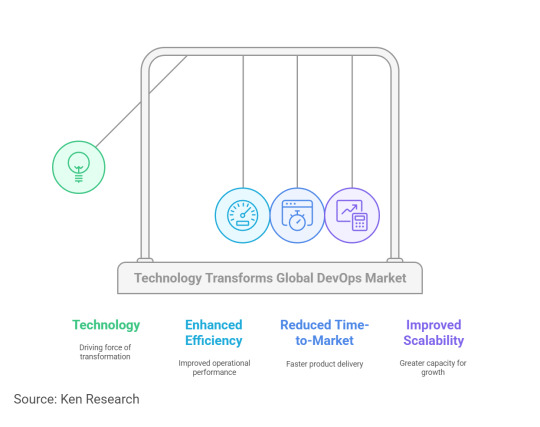
Download the Sample Report@ Global DevOps Market
Technological Advancements
1. Cloud Computing in DevOps
Application and Benefits: Cloud computing has become the backbone of modern DevOps practices, offering scalability, flexibility, and cost-efficiency. Cloud-based DevOps tools simplify collaboration among distributed teams and streamline deployment processes.
Impact: In 2023, the cloud segment dominated the DevOps market due to its ability to support hybrid IT environments, enabling seamless integration across on-premise and cloud infrastructures.
Example: Microsoft Azure DevOps provides cloud-based solutions that integrate CI/CD pipelines, enabling faster development cycles for businesses of all sizes.
2. Artificial Intelligence (AI) and Machine Learning in DevOps
Application and Benefits: AI and machine learning are enhancing automation within DevOps pipelines by enabling predictive analytics, anomaly detection, and intelligent decision-making.
Impact: AI integration allows teams to optimize resource allocation, detect potential failures, and resolve issues proactively, reducing downtime and improving reliability.
Example: IBM Corporation expanded its AI-driven automation capabilities in 2023, offering solutions that deliver real-time insights into DevOps workflows.
3. DevSecOps for Enhanced Security
Application and Benefits: DevSecOps integrates security practices into every stage of the software development lifecycle, ensuring compliance and reducing vulnerabilities.
Impact: In 2024, organizations increasingly adopted DevSecOps to address rising cyber threats, particularly in regulated industries like finance and healthcare.
Example: Google Cloud’s Assured Workloads for DevOps ensures adherence to compliance standards, offering secure DevOps pipelines for regulated sectors.
4. Microservices Architecture and Containerization
Application and Benefits: Microservices architecture, combined with containerization tools like Docker and Kubernetes, allows developers to create modular, scalable applications.
Impact: These technologies simplify the deployment and management of complex applications, enabling faster updates and enhanced scalability.
Example: Red Hat OpenShift’s enhanced support for containerized microservices in 2024 has streamlined operations for businesses adopting this architecture.
Case Studies
1. IBM Corporation: AI-Driven Automation
In 2023, IBM expanded its DevOps portfolio with AI-driven automation tools designed for hybrid cloud environments. These tools enabled enterprises to automate repetitive tasks, reduce operational bottlenecks, and enhance the efficiency of software deployment processes.
Results:
Reduced application downtime by 30%.
Improved time-to-market for new applications by 40%.
2. Google Cloud: Assured Workloads for DevOps
Google launched Assured Workloads for DevOps in 2024, targeting regulated industries like healthcare and finance. This solution allowed organizations to implement DevOps pipelines that adhered to strict compliance standards, ensuring data security and regulatory compliance.
Results:
Enhanced adoption of DevOps practices in compliance-heavy sectors.
Reduced security vulnerabilities in application deployment pipelines.
Challenges of Tech Integration
1. Security and Compliance Concerns
Challenge: The rise in cyberattacks has amplified concerns over the security of DevOps processes, especially in cloud environments. Ensuring compliance with regulatory standards is another significant challenge.
Recommendation: Adopt DevSecOps practices, implement robust encryption protocols, and provide training to DevOps teams on security best practices.
2. Skill Shortages
Challenge: The global shortage of skilled DevOps professionals, particularly in emerging markets, is slowing the adoption of advanced technologies.
Recommendation: Invest in upskilling programs, partner with educational institutions, and leverage automation to reduce dependency on human expertise.
3. High Costs of Technology Implementation
Challenge: Implementing cutting-edge DevOps technologies like AI and containerization requires significant upfront investment, which may deter small and medium enterprises (SMEs).
Recommendation: Opt for scalable, cloud-based DevOps solutions that align with budget constraints and provide long-term ROI.
Future Outlook
Integration with Edge Computing: By 2028, the integration of DevOps with edge computing environments will redefine how decentralized and distributed computing resources are managed. This trend, fueled by the deployment of 5G networks, will accelerate real-time application development in sectors like autonomous vehicles and smart cities.
Widespread Adoption of DevSecOps: The global emphasis on cybersecurity will drive the widespread adoption of DevSecOps as a standard practice. By 2028, the market for DevSecOps tools is expected to reach $20 billion, with significant adoption in finance, healthcare, and government sectors.
AI-Powered DevOps: AI and machine learning will continue to transform DevOps processes, enabling organizations to predict system failures, optimize workflows, and improve decision-making. This will further reduce operational costs and enhance application reliability.
Conclusion Technology is at the heart of the transformation in the global DevOps market. From cloud computing and AI integration to the adoption of DevSecOps and containerization, these advancements are reshaping software development and IT operations. While challenges like skill shortages and security concerns persist, organizations that embrace innovation and invest in scalable, secure solutions will be well-positioned to thrive in this dynamic market.
#Global DevOps Market#Global DevOps Industry#DevOps Market#DevOps Market Share#DevOps Market Trends#DevOps Market Forecast#DevOps Market Analysis#Globa DevOps Market Research Report
0 notes
Text
Sr Specialist Software Engineering (Java Full Stack)
Bitbucket, Jenkins, Nexus, UCD to version control, build, store artifact, and deploy the software projects. Use MS Project… OpenShift and Docker. Experience with modern software development tools for Continuous Integration including Jenkins, Git… Apply Now
0 notes
Text
Migrating Virtual Machines to OpenShift: Tools and Techniques
As organizations shift to cloud-native architectures, migrating traditional virtual machines (VMs) to containerized platforms like OpenShift becomes crucial. OpenShift, a Kubernetes-based platform, offers scalability, flexibility, and developer-friendly features. However, moving from VMs to OpenShift requires careful planning and the right tools. Here’s an overview of key tools and techniques for a successful migration.
Tools for VM Migration
OpenShift Virtualization: OpenShift's native virtualization allows organizations to run VMs directly within the OpenShift environment. This tool enables you to transition VMs to containers with minimal disruption. It supports a variety of guest operating systems, simplifying the migration process.
Containerization Tools (e.g., Podman, Docker): These tools can be used to containerize applications running on VMs, making them ready for OpenShift. By converting applications into containers, organizations can leverage OpenShift's orchestration and scaling capabilities.
Red Hat Migrate2Container: This tool helps migrate legacy workloads from VMs to containers, offering automated assessments, planning, and execution. It reduces the complexity of the migration process and provides best practices for moving applications.
Techniques for Migration
Lift and Shift: This technique involves migrating VMs directly to OpenShift without significant changes. OpenShift Virtualization simplifies this process, allowing VMs to run alongside containerized workloads.
Re-platforming: In this approach, you convert VMs into containerized applications. This may involve breaking down monolithic applications into microservices and optimizing them for cloud-native environments.
Re-factoring: For more complex migrations, re-factoring involves redesigning the applications to fully exploit OpenShift’s capabilities, ensuring greater performance and scalability.
Migrating VMs to OpenShift can be a smooth transition with the right tools and strategies. By leveraging OpenShift’s native virtualization and containerization tools, organizations can embrace the future of cloud-native computing.
For more details visit www.hawkstack.com
0 notes
Text
The Future of Container Platforms: Where is OpenShift Heading?
Introduction
The container landscape has evolved significantly over the past few years, and Red Hat OpenShift has been at the forefront of this transformation. As organizations increasingly adopt containerization to enhance their DevOps practices and streamline application deployment, it's crucial to stay informed about where platforms like OpenShift are heading. In this post, we'll explore the future developments and trends in OpenShift, providing insights into how it's shaping the future of container platforms.
The Evolution of OpenShift
Red Hat OpenShift has grown from a simple Platform-as-a-Service (PaaS) solution to a comprehensive Kubernetes-based container platform. Its robust features, such as integrated CI/CD pipelines, enhanced security, and scalability, have made it a preferred choice for enterprises. But what does the future hold for OpenShift?
Trends Shaping the Future of OpenShift
Serverless Architectures
OpenShift is poised to embrace serverless computing more deeply. With the rise of Function-as-a-Service (FaaS) models, OpenShift will likely integrate serverless capabilities, allowing developers to run code without managing underlying infrastructure.
AI and Machine Learning Integration
As AI and ML continue to dominate the tech landscape, OpenShift is expected to offer enhanced support for these workloads. This includes better integration with data science tools and frameworks, facilitating smoother deployment and scaling of AI/ML models.
Multi-Cloud and Hybrid Cloud Deployments
OpenShift's flexibility in supporting multi-cloud and hybrid cloud environments will become even more critical. Expect improvements in interoperability and management across different cloud providers, enabling seamless application deployment and management.
Enhanced Security Features
With increasing cyber threats, security remains a top priority. OpenShift will continue to strengthen its security features, including advanced monitoring, threat detection, and automated compliance checks, ensuring robust protection for containerized applications.
Edge Computing
The growth of IoT and edge computing will drive OpenShift towards better support for edge deployments. This includes lightweight versions of OpenShift that can run efficiently on edge devices, bringing computing power closer to data sources.
Key Developments to Watch
OpenShift Virtualization
Combining containers and virtual machines, OpenShift Virtualization allows organizations to modernize legacy applications while leveraging container benefits. This hybrid approach will gain traction, providing more flexibility in managing workloads.
Operator Framework Enhancements
Operators have simplified application management on Kubernetes. Future enhancements to the Operator Framework will make it even easier to deploy, manage, and scale applications on OpenShift.
Developer Experience Improvements
OpenShift aims to enhance the developer experience by integrating more tools and features that simplify the development process. This includes better IDE support, streamlined workflows, and improved debugging tools.
Latest Updates and Features in OpenShift [Version]
Introduction
Staying updated with the latest features in OpenShift is crucial for leveraging its full potential. In this section, we'll provide an overview of the new features introduced in the latest OpenShift release, highlighting how they can benefit your organization.
Key Features of OpenShift [Version]
Enhanced Developer Tools
The latest release introduces new and improved developer tools, including better support for popular IDEs, enhanced CI/CD pipelines, and integrated debugging capabilities. These tools streamline the development process, making it easier for developers to build, test, and deploy applications.
Advanced Security Features
Security enhancements in this release include improved vulnerability scanning, automated compliance checks, and enhanced encryption for data in transit and at rest. These features ensure that your containerized applications remain secure and compliant with industry standards.
Improved Performance and Scalability
The new release brings performance optimizations that reduce resource consumption and improve application response times. Additionally, scalability improvements make it easier to manage large-scale deployments, ensuring your applications can handle increased workloads.
Expanded Ecosystem Integration
OpenShift [Version] offers better integration with a wider range of third-party tools and services. This includes enhanced support for monitoring and logging tools, as well as improved interoperability with other cloud platforms, making it easier to build and manage multi-cloud environments.
User Experience Enhancements
The latest version focuses on improving the user experience with a more intuitive interface, streamlined workflows, and better documentation. These enhancements make it easier for both new and experienced users to navigate and utilize OpenShift effectively.
Conclusion
The future of Red Hat OpenShift is bright, with exciting developments and trends on the horizon. By staying informed about these trends and leveraging the new features in the latest OpenShift release, your organization can stay ahead in the rapidly evolving container landscape. Embrace these innovations to optimize your containerized workloads and drive your digital transformation efforts.
For more details click www.hawkstack.com
#redhatcourses#docker#linux#information technology#container#kubernetes#containerorchestration#containersecurity#dockerswarm#aws#openshift#redhatopenshift#hawkstack#hawkstack technologies
0 notes
Text

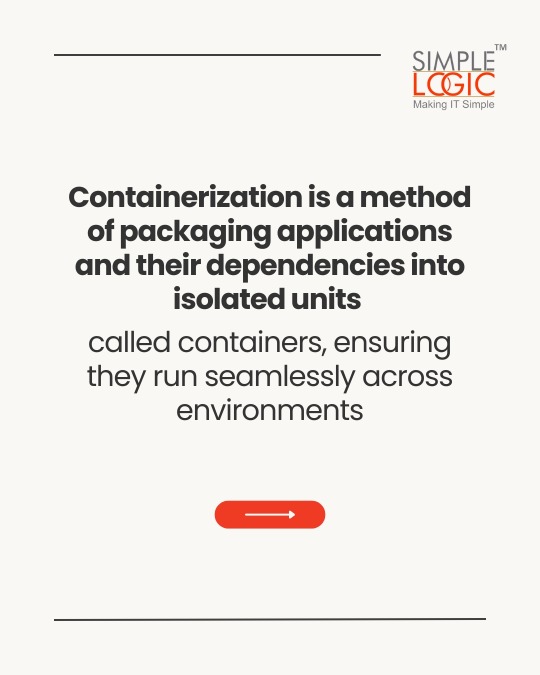
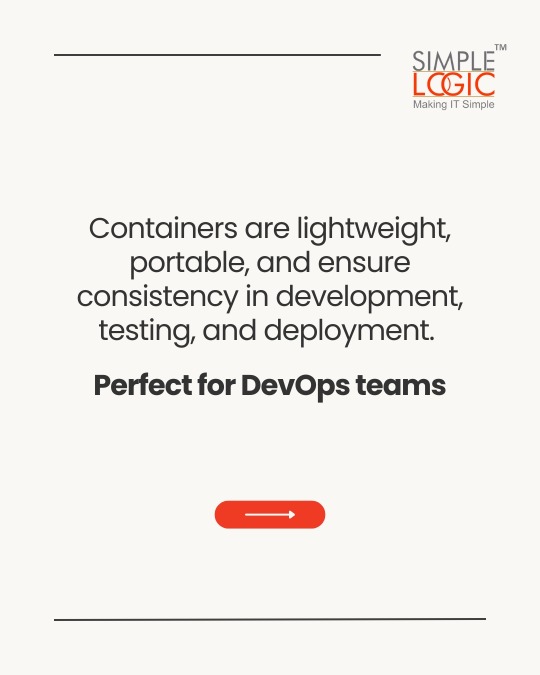
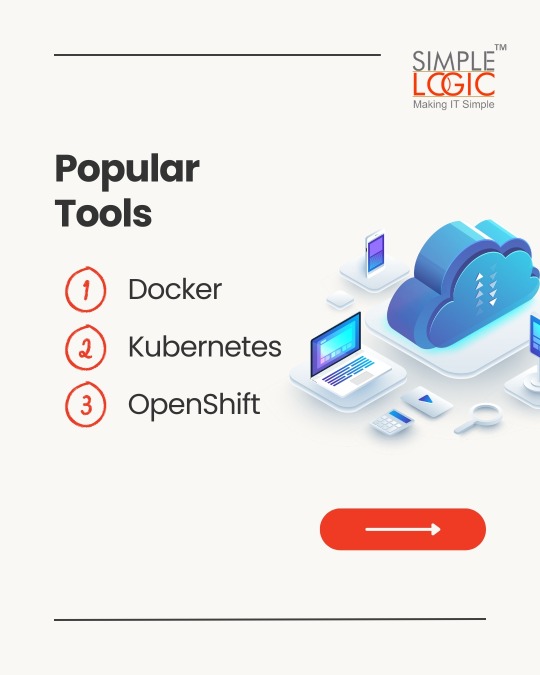
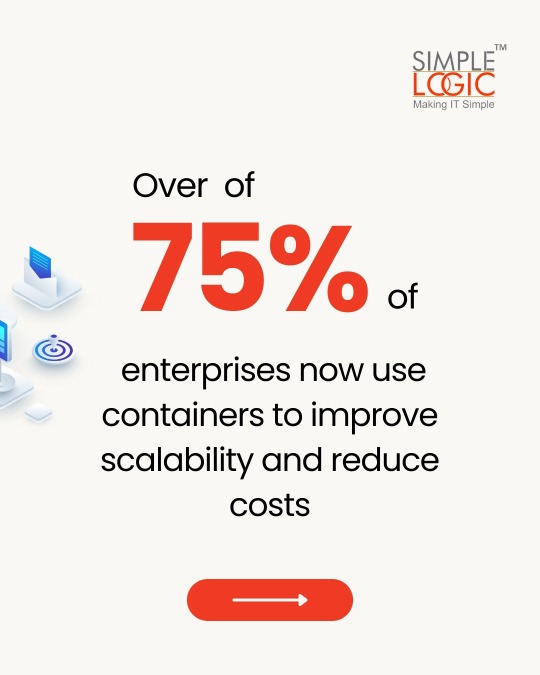

#TechKnowledge Have you heard of Containerization?
Swipe to discover what it is and how it can impact your digital security! 🚀
👉 Stay tuned for more simple and insightful tech tips by following us.
🌐 Learn more: https://simplelogic-it.com/
💻 Explore the latest in #technology on our Blog Page: https://simplelogic-it.com/blogs/
✨ Looking for your next career opportunity? Check out our #Careers page for exciting roles: https://simplelogic-it.com/careers/
#techterms#technologyterms#techcommunity#simplelogicit#makingitsimple#techinsight#techtalk#containerization#application#development#testing#deployment#devops#docker#kubernets#openshift#scalability#security#knowledgeIispower#makeitsimple#simplelogic#didyouknow
0 notes
Text
In today’s modern software development world, container orchestration has become an essential practice. Imagine containers as tiny, self-contained boxes holding your application and all it needs to run; lightweight, portable, and ready to go on any system. However, managing a swarm of these containers can quickly turn into chaos. That's where container orchestration comes in to assist you. In this article, let’s explore the world of container orchestration. What Is Container Orchestration? Container orchestration refers to the automated management of containerized applications. It involves deploying, managing, scaling, and networking containers to ensure applications run smoothly and efficiently across various environments. As organizations adopt microservices architecture and move towards cloud-native applications, container orchestration becomes crucial in handling the complexity of deploying and maintaining numerous container instances. Key Functions of Container Orchestration Deployment: Automating the deployment of containers across multiple hosts. Scaling: Adjusting the number of running containers based on current load and demand. Load balancing: Distributing traffic across containers to ensure optimal performance. Networking: Managing the network configurations to allow containers to communicate with each other. Health monitoring: Continuously checking the status of containers and replacing or restarting failed ones. Configuration management: Keeping the container configurations consistent across different environments. Why Container Orchestration Is Important? Efficiency and Resource Optimization Container orchestration takes the guesswork out of resource allocation. By automating deployment and scaling, it makes sure your containers get exactly what they need, no more, no less. As a result, it keeps your hardware working efficiently and saves you money on wasted resources. Consistency and Reliability Orchestration tools ensure that containers are consistently configured and deployed, reducing the risk of errors and improving the reliability of applications. Simplified Management Managing a large number of containers manually is impractical. Orchestration tools simplify this process by providing a unified interface to control, monitor, and manage the entire lifecycle of containers. Leading Container Orchestration Tools Kubernetes Kubernetes is the most widely used container orchestration platform. Originally developed by Google and now maintained by the Cloud Native Computing Foundation (CNCF), Kubernetes offers a comprehensive set of features for deploying, scaling, and managing containerized applications. Docker Swarm Docker Swarm is Docker's native clustering and orchestration tool. It integrates seamlessly with Docker and is known for its simplicity and ease of use. Apache Mesos Apache Mesos is a distributed systems kernel that can manage resources across a cluster of machines. It supports various frameworks, including Kubernetes, for container orchestration. OpenShift OpenShift is an enterprise-grade Kubernetes distribution by Red Hat. It offers additional features for developers and IT operations teams to manage the application lifecycle. Best Practices for Container Orchestration Design for Scalability Design your applications to scale effortlessly. Imagine adding more containers as easily as stacking building blocks which means keeping your app components independent and relying on external storage for data sharing. Implement Robust Monitoring and Logging Keep a close eye on your containerized applications' health. Tools like Prometheus, Grafana, and the ELK Stack act like high-tech flashlights, illuminating performance and helping you identify any issues before they become monsters under the bed. Automate Deployment Pipelines Integrate continuous integration and continuous deployment (CI/CD) pipelines with your orchestration platform.
This ensures rapid and consistent deployment of code changes, freeing you up to focus on more strategic battles. Secure Your Containers Security is vital in container orchestration. Implement best practices such as using minimal base images, regularly updating images, running containers with the least privileges, and employing runtime security tools. Manage Configuration and Secrets Securely Use orchestration tools' built-in features for managing configuration and secrets. For example, Kubernetes ConfigMaps and Secrets allow you to decouple configuration artifacts from image content to keep your containerized applications portable. Regularly Update and Patch Your Orchestration Tools Stay current with updates and patches for your orchestration tools to benefit from the latest features and security fixes. Regular maintenance reduces the risk of vulnerabilities and improves system stability.
0 notes
Text
OpenShift Local on Windows 11 and Troubleshooting Errors
OpenShift Local on Windows 11 and Troubleshooting Errors #openshift #container #kubernetes #openshiftlocal #openshiftcluster #openshiftvms #openshiftsetup #openshiftwindows #containerapps #docker #kubevip #openshiftdevelopment
With all the tumult across the virtualization space this year, many have been looking at alternative solutions to running virtualized environments, containers, VMs, etc. There are many great solutions out there. One that I haven’t personally tried before putting the effort getting into my lab is Red Hat OpenShift. In case you didn’t know, there is a variant of OpenShift called OpenShift Local…
0 notes
Text
Top DevOps Tools for 2025: Optimizing Automation, CI/CD, and Infrastructure Management
Introduction
In today’s fast-paced digital landscape, DevOps has become a cornerstone of modern IT, enabling organizations to accelerate software delivery, improve reliability, and streamline infrastructure management. With the increasing demand for automation, CI/CD pipelines, and cloud-native architectures, selecting the right tools is crucial for DevOps success.
By leveraging cutting-edge DevOps tools, teams can enhance efficiency, minimize errors, and ensure seamless deployments. This blog explores the top DevOps tools in 2025, categorized by automation, CI/CD, infrastructure management, monitoring, and security. Additionally, we’ll discuss how HawkStack provides expert support to help organizations implement and manage these tools effectively.
1. Automation Tools
Automation is a fundamental aspect of DevOps, reducing manual intervention and ensuring consistency across environments. Here are some top automation tools:
Ansible – A powerful open-source tool for configuration management, automation, and application deployment.
Terraform – An Infrastructure as Code (IaC) tool that allows teams to define, provision, and manage infrastructure efficiently.
Pulumi – A modern IaC solution that supports multiple programming languages, making infrastructure automation more accessible to developers.
2. CI/CD Tools
Continuous Integration and Continuous Deployment (CI/CD) tools enable seamless software delivery, reducing the risk of deployment failures. The top tools include:
Jenkins – A widely used open-source automation server that enables CI/CD pipelines.
GitHub Actions – A GitHub-integrated CI/CD tool that simplifies automation for developers.
GitLab CI/CD – A robust DevOps platform that provides built-in CI/CD automation.
ArgoCD – A GitOps-based deployment tool for Kubernetes, ensuring declarative and automated application management.
3. Infrastructure & Container Management
With the rise of cloud-native applications, managing infrastructure and containers is essential. These tools lead the way:
Kubernetes – The industry-standard orchestration platform for managing containerized applications.
Docker – A widely used containerization platform that simplifies application development and deployment.
OpenShift – An enterprise Kubernetes platform that includes built-in security and automation features.
4. Monitoring & Observability
Monitoring and observability tools help DevOps teams gain real-time insights into system performance and reliability:
Prometheus – A popular open-source monitoring and alerting toolkit designed for cloud-native applications.
Grafana – A visualization tool that creates real-time dashboards for monitoring system health.
Datadog – A cloud monitoring solution offering full-stack observability.
New Relic – An application performance monitoring (APM) tool that provides deep insights into system performance.
5. Security & Compliance
Security is a critical aspect of DevOps, ensuring that applications and infrastructure remain protected. These tools help maintain security and compliance:
HashiCorp Vault – A powerful tool for managing secrets and encrypting sensitive data.
Aqua Security – A Kubernetes-native security platform designed to protect containerized applications.
Trivy – A fast and lightweight vulnerability scanner for containers and dependencies.
6. Best Practices for Choosing the Right DevOps Stack
When selecting DevOps tools, organizations should consider several key factors:
Scalability – Ensuring tools can grow with the business’s needs.
Integration – Compatibility with existing workflows and infrastructure.
Cost – Balancing open-source and enterprise solutions based on budget.
Support & Community – Evaluating the level of community support and vendor assistance.
Case studies of successful DevOps tool adoption can provide insights into best practices and implementation strategies.
7. How HawkStack Supports Your DevOps Journey
At HawkStack, we specialize in providing expert DevOps support to help organizations streamline their operations. Our services include:
Consulting & Implementation – Assisting with DevOps tool selection and integration.
Ongoing Support – Providing 24/7 support for DevOps tools and platforms.
Custom Solutions – Developing tailored automation, monitoring, and security solutions.
Conclusion
Choosing the right DevOps tools is crucial for optimizing automation, CI/CD, and infrastructure management. By leveraging top tools like Kubernetes, Ansible, Jenkins, and Terraform, organizations can improve efficiency, security, and scalability.
If you need expert guidance in implementing and managing your DevOps stack, HawkStack is here to help. Contact us today to learn how we can support your DevOps journey.
Need expert DevOps support? Contact us today!
visit www.hawkstack.com
0 notes